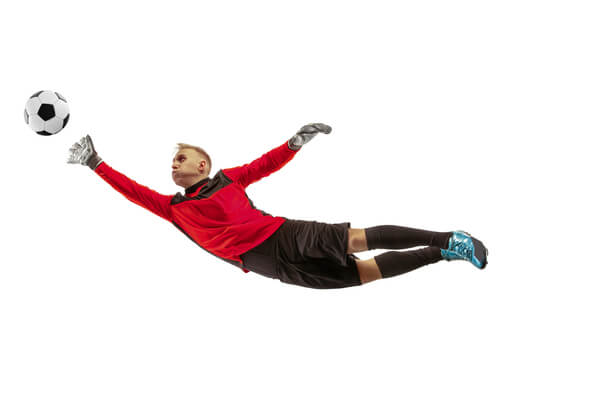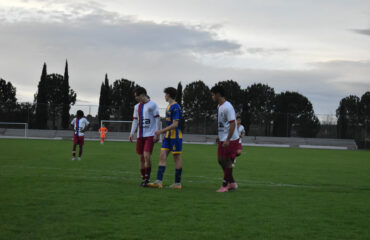The goalkeeping coach has to adapt the methodologies to modern football. It is clear that the specific position of the goalkeeper has changed a lot in recent times as a result of the change in offside rules, with the consequent evolution in the way teams play, and the impossibility of catching the ball with the hands after receiving the ball from a teammate.
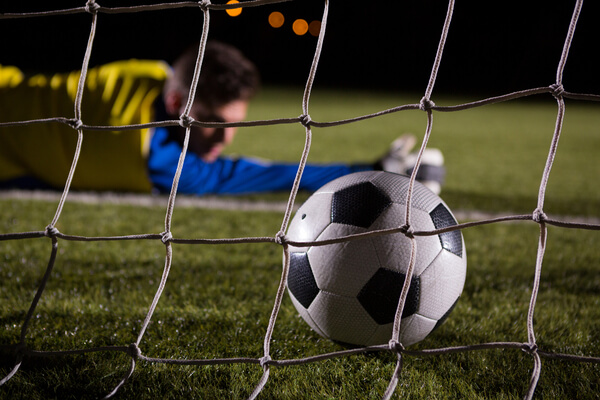
If it was already a position of football goalkeepers that required very specific characteristics and training, now this position has an added value, and that is that in addition to dominating the game under the sticks, goalkeepers have been forced to improve in the initiation, resumption and continuation of the game through footwork.
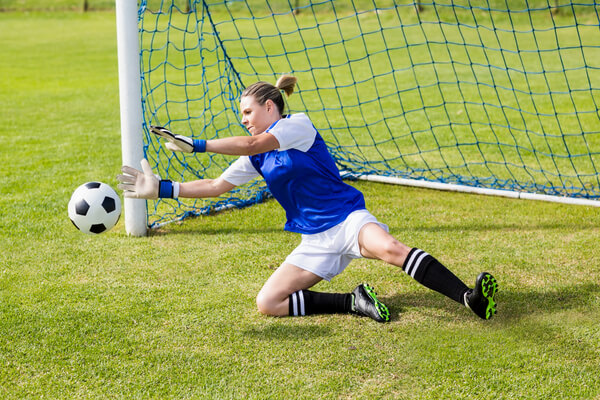
Thus, the goalkeeper has become a much more relevant figure in the collective game and this has not gone unnoticed by the big European clubs, who have surely listened to expert football analysts and have understood the importance of having a proven player in this position.
Just this past year, in the summer transfer window, the biggest ever outlay in this area has been made. Liverpool paid 73 million euros for the transfer of Alisson Becker from Roma, making him the most expensive goalkeeper of all time.

Alisson Becker
But that’s not all. Shortly afterwards, Chelsea surpassed this record and paid 80 million euros for the transfer of Kepa Arrizabalaga from Athletic Bilbao.
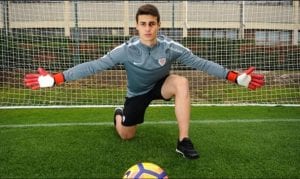
Kepa Arrizabalaga
TYPES OF TRAINING REQUIRED FOR A GOALKEEPER
From these data it is clear that this is a very important position, and we as goalkeeping coaches must be aware of this and train ourselves to be up to the task. Of all the goalkeeper training fields such as technical, tactical, cognitive, psychological, etc.; perhaps due to the lack of training, the most unknown or the one that we as goalkeeping coaches give the least specificity to is the conditional field.
At Soccer inter-Action we train goalkeepers in all the required fields. The football academy also develops a specific programme for individual goalkeepers. Contact us if you want to know more about our academy for goalkeepers.
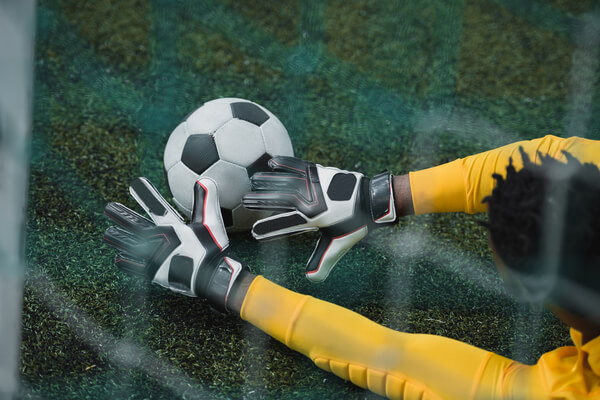
CONDITIONAL GOALKEEPER TRAINING
Within this field I would like to make a special reflection on the use and usefulness of training on unstable surfaces to achieve the maximum performance of the goalkeeper. Unstable surfaces are all those materials such as trx, bossu, fitball, which through certain physical characteristics such as the ability to deform, when force is applied to them, it affects the activation of our balance system, thus improving our physical condition.
The use of this type of surface causes an acute increase in muscle activation, muscle co-activation and a decrease in the capacity to produce strength and power.
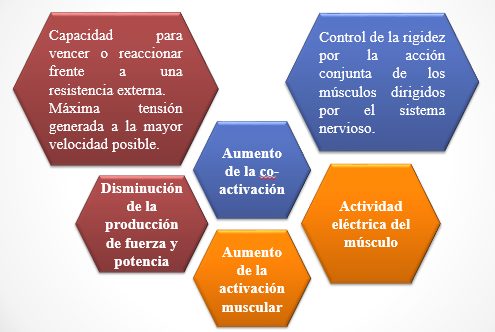
(Cervera, 1999; Masso et al., 2010; Vera, Barbado, Flores, Alonso & Elvira,2012)
Among these effects, I think it is interesting to know the term muscle co-activation, and how we can incorporate it more effectively into our training sessions through small details. Co-activation is the joint action of agonist, antagonist and synergist muscles that, coordinated by the nervous system, are able to increase or decrease the stiffness of a joint depending on the demands of the task (Vera et al., 2012).
Extrapolating this concept to goalkeeper specific training, whenever a goalkeeper coach talks about blocking we hear the word stiffness, and its adaptation to the speed or power at which the ball is approaching. Therefore, it follows that a basic ability of a goalkeeper when blocking a ball is his ability to generate rigid and stable joints, and not only that, but he must consciously control the variation of this stability/rigidity. This will be key in goalkeeper training.
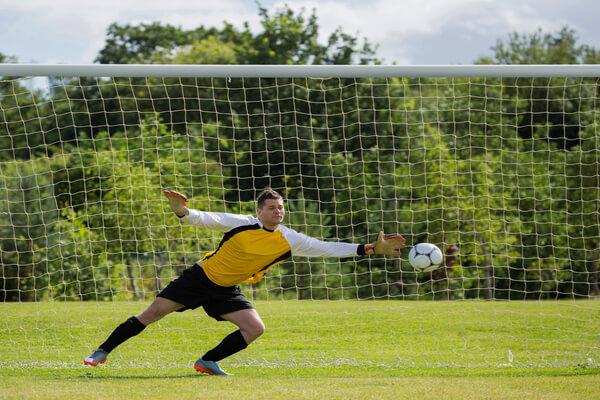
Furthermore, not only in blocks, but also in deflections, fist clearances and even extensions, the goalkeeper must generate rigid joints and vary this rigidity depending on the requirements of the action. For example, in a fist clearance the goalkeeper must be able to generate a rigid wrist, or in a gestural deflection of the foot the goalkeeper must generate a rigid lower limb.

Therefore, on a practical level, in the goalkeeper’s conditional training, it is interesting to use this type of material to influence this skill. With small tricks or variations in the execution of the exercises and in the use of the unstable surfaces available to us, we can enhance it to the maximum.
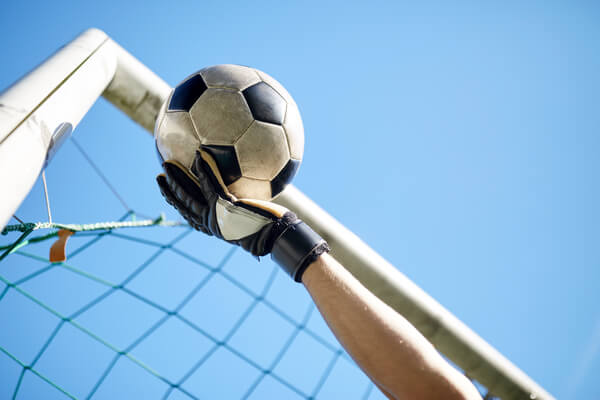
GOALKEEPER CONDITIONAL TRAINING EXERCISES
For example, when doing push-ups on a bossu, it would be interesting to use the push-up bars to enhance the work of the wrist joint by causing a greater co-activation of the muscles of the wrist joint.
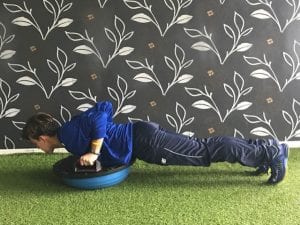
Push-ups with push-up bars on bossu

When we perform a front plank, we can include a fibtall in this work and thus enhance the work of the shoulder joint in such a way as to provoke a greater co-activation of the muscles of this joint.
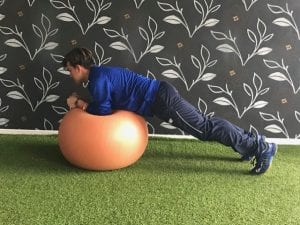
Front plank on fitball goalkeeper training
A good exercise to improve the stability and stiffness of the lower limb is to use the bossu for squats to improve the stability of the knee joint, or simply try kneeling on a fitball to improve the stability of the hip joint.
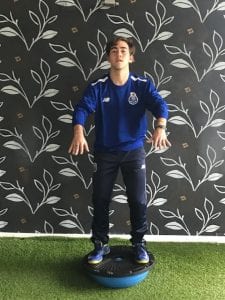
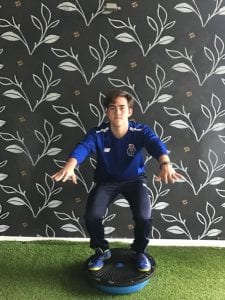
Squat on bossu goalkeeper training
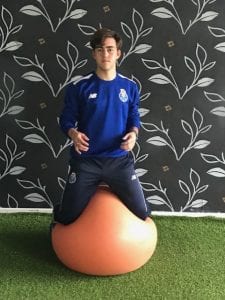
Keeping on fitball on your knees goalkeeper training
It should also be noted that, in this type of exercise, we can intentionally create vibrations to generate instabilities and force the goalkeepers to recover their initial stiffness, bringing us even closer to generating exercises as similar as possible to real match actions.
initial rigidity, bringing us even closer to generating exercises that are as similar as possible to real match actions.
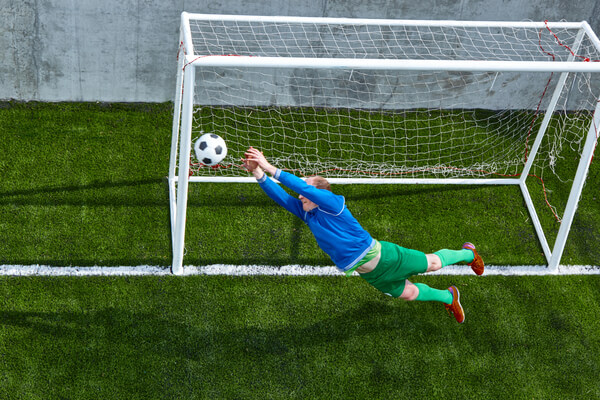
GOALKEEPING COACH SUCCESS
In conclusion, I would like to emphasise that the real success of a high level goalkeeping coach is based on his ability to reduce the uncertainty to which his goalkeeper is exposed every weekend, and for this it is as important to analyse and create good technical/tactical/cognitive exercises, as it is to create specific conditional exercises that enhance the above skills. Within this field, what is presented in this article can be a good resource to resort to in order to improve our work in this aspect. Technification based on these exercises or high performance camps can be complementary instruments to the daily work, necessary if we want to achieve an adequate degree of professionalism.
BIBLIOGRAPHY
Cervera, O. V. (1999). Entrenamiento de la fuerza y explosividad para la actividad física y el deporte de competición (2a ed). INDE,
Massó, N. Rey, F. Romero, D. Gual, G. Costa, L. Germán, A. (2010). Aplicaciones de la electromiografía de superficie en el deporte. Apunts: Medicina de l’esport, 45(166), 127-136.
Vera-Garcia, F.J., Barbado, D., Flores-Parodi, B., Alonso-Roque, J.I., & Elvira ,J.L. (2012). Trunk muscle activation in spine stabilization exercice. Revista Internacional de Medicina y Ciencias de la Actividad Física y el Deporte, 47.



